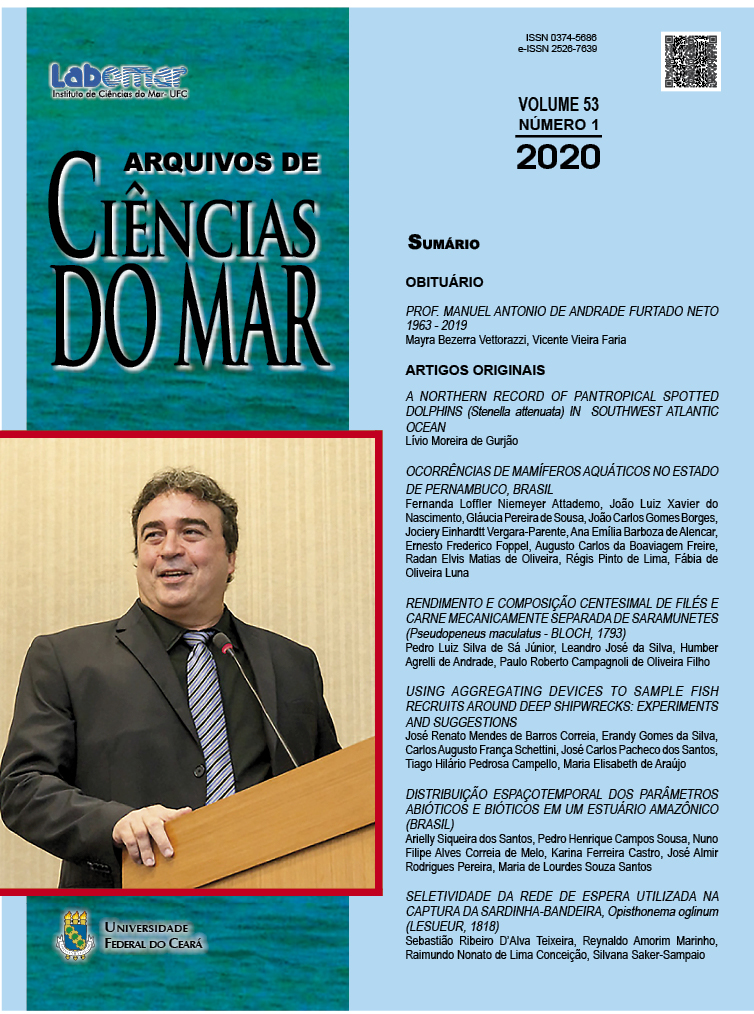Selectivity of the gill net used in the capture of the atlantic thread-herring, Opisthonema oglinum (Lesueur, 1818)
DOI:
https://doi.org/10.32360/acmar.v53i1.40387Abstract
The present research aims to determine the selectivity of the gill nets used in capture of the
atlantic thread-herring, Opisthonema oglinum, from Caponga beach, municipality of Cascavel,
Ceará, Brazil. Data of total length (cm) were obtained from two groups, each with 780 individuals,
captured by gill nets with 5 cm and 6 cm meshes between opposing nodes, from August to October
2014. These data were described in histograms of frequency of length, being more representatives the
classes of 21.6 cm (24.23%) for the mesh of 5 cm and of 25.7 cm (23.08%) for the one of 6 cm. The
mean selection length was 23.7 cm for the 5 cm mesh and 28.5 cm for the 6 cm mesh. The selection
range was 23.7 ± 7.9 cm and 28.5 ± 7.9 cm for the 5 cm and 6 cm mesh, respectively. The equations
of the grid selection curves for the two mesh sizes were obtained, and the probability of capturing
individuals with less than the minimum length established in 15 cm was very low and corresponded
to 1.32% and 0.3% for 5 cm and 6 cm mesh, respectively.
Downloads
Downloads
Published
How to Cite
Issue
Section
License
1. Proposta de Política para Periódicos de Acesso Livre
Autores que publicam nesta revista concordam com os seguintes termos:
- Autores mantém os direitos autorais e concedem à revista o direito de primeira publicação, com o trabalho simultaneamente licenciado sob a Licença Creative Commons Attribution que permite o compartilhamento do trabalho com reconhecimento da autoria e publicação inicial nesta revista.
- Autores têm autorização para assumir contratos adicionais separadamente, para distribuição não-exclusiva da versão do trabalho publicada nesta revista (ex.: publicar em repositório institucional ou como capítulo de livro), com reconhecimento de autoria e publicação inicial nesta revista.
- Autores têm permissão e são estimulados a publicar e distribuir seu trabalho online (ex.: em repositórios institucionais ou na sua página pessoal) a qualquer ponto antes ou durante o processo editorial, já que isso pode gerar alterações produtivas, bem como aumentar o impacto e a citação do trabalho publicado (Veja O Efeito do Acesso Livre).

